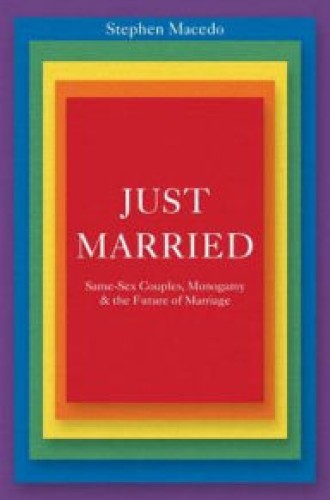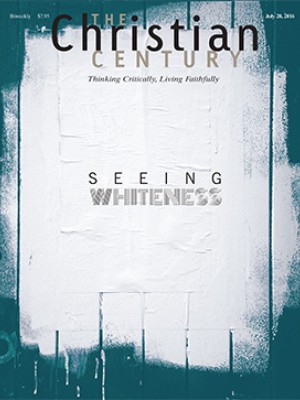The morality of marriage equality
An ardent supporter of marriage as a civil institution who is interested in fending off its radical liberal critics, Stephen Macedo traces the milestones on the road toward marriage equality for same-sex couples. He explores in depth the cultural shifts, legislative actions, and landmark court cases that paved the way for the remarkably speedy success of the marriage equality movement.
To be sure, there were setbacks—or, depending on your perspective, temporary victories for the opponents of same-sex marriage. But according to Macedo, the rise of same-sex marriage was inevitable in a just and democratic society. With the recent broad acceptance of homosexuality as an immutable characteristic and not an alternative lifestyle preference, as well as the mass exodus of gay people from the closet, many Americans went from being squeamish about gay marriage to being squeamish about telling their gay friends that their relationships are less than valid. As Macedo notes:
Read our latest issue or browse back issues.
Exclusion of gay and lesbian Americans from marriage is, like their exclusion from the military, invidious: a badge of inferiority and second-class status that perpetuates harmful stereotypes and stigma that are bound to be especially damaging to children and young adults. . . . Keeping gays from marrying accomplishes nothing for the greater good.
After establishing that there is no legitimate reason to discriminate against gay and lesbian couples who desire to marry, Macedo proceeds with his key task: debunking the slippery-slope arguments that predict that marriage equality for gay and lesbian Americans is a gateway to the legalization of polygamy. Here it becomes clear that Macedo has laid out his careful justification of same-sex marriage in such a way that the same principles may be used to reject nonmonogamous marriage. Again, justice and the common good are central.
Macedo leans heavily on evidence gathered by the Supreme Court of British Columbia as it upheld the criminality of polygamy. Polygamy, that court found, is harmful to women and children, as well as to less powerful males who cannot compete with wealthier men for wives. “Traditional polygamy is not merely contingently but inherently unequal,” Macedo writes, and when inequality is the evil that one is intent on rooting out, this is a condemnation with great weight.
In addition to discussing research on polygamy, Macedo presents disturbing anecdotes highlighting the horrors of very young girls being raised to enter polygamous marriages with much older men. He allows, however, that some polygamous families are generally healthy.
Where Macedo falters is in how quickly he dismisses the rise of polyamory, the so-called ethical nonmonogamy. Macedo insists that there is no legitimate research about polyamorous lifestyles. He writes that “experts on polyamory include people with names like ‘Pepper Mint’ and ‘Cunning Minx’” and claims that “there may be more people writing about [polyamory] than doing it.”
In “Multiple Lovers, Without Jealousy,” published by the Atlantic in 2014, Olga Khazan wrote, “We’re not polyamorous, by the way. I feel the need to clarify that, as did the scientists I spoke with who study polyamory. One such professor told me that when she describes her research to her peers at academic conferences, they often ask her if she herself is in an open relationship. ‘Would you ask a cancer researcher if they had cancer?’”
There are people seriously studying polyamory. There are people seriously practicing polyamory. And undoubtedly, there are people—even within the church—preparing to fight for certain rights and privileges to be extended to polyamorists. Perhaps there isn’t a slippery slope from marriage equality to plural marriage equality, but there is at least a potential low-grade tipping in that direction.
Many theological conservatives would quibble with Macedo’s rhetoric about the greater good. A practice that is purportedly contrary to God’s design cannot be conceived of as good no matter how emphatically one emphasizes that civil marriage is just that—civil. But Macedo sets religious perspectives aside immediately, and beyond his examination and evisceration of the natural-law arguments favored by opponents of same-sex marriage, he never picks such perspectives up again. They are simply not relevant to his project.
As a pastor who has pondered marriage primarily in biblical and theological terms—and, when I’m engaged in pastoral counseling, practical terms—it was a good challenge to find my familiar considerations sidelined. After all, when I officiate at weddings that are religious in ritual and meaning, I do so with power vested in me by the state. Just Married provides a deep understanding of what it is I’m signing off on when I scribble my name on those county-issued marriage licenses.







